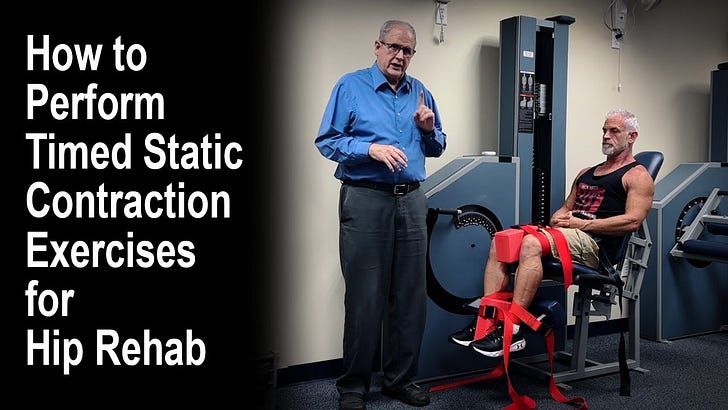Occasionally, I was around the late Mike Mentzer. And although we rarely spoke, he seemed to be a reasonable and friendly guy.
Long before he wrote his Heavy Duty and became a radio talk-show host, we in the inner office at Nautilus regarded him as the sanest of the notable bodybuilders. Although by our standards he vastly overtrained, his workout volume was greatly delimited compared to the prevailing practice of the culture at large.
Eventually, Mike became deeply infused with Nautilus philosophy—the exercise teachings of Arthur Jones—and became a great mouthpiece for us that was fortuitously attached to a body that every man (whether a man admitted it or not) wanted to have for himself.
To Mike’s credit, he became much more intuitive to the exercise principles of intensity, brief volume, and maximized rest. Against all the odds of overcoming his cherished gym-rat beliefs, he became the thought leader in the body culture field. He truly soared; however, he is known for a really bad idea, one that contradicted—unbeknown to him—the philosophy that underpinned his teachings.
There are several people around me who began their intellectual journey into exercise by way of Mike Mentzer’s influence. Some of them believe to this day that Mike’s information was original. And as I am not as intimate with Mike’s education and thinking as people like Mike Moran and Drew Baye, I recently asserted that Mike’s only intellectual contribution was his so-called rest-pause technique.
But then, Drew reminded me of Peary Radar’s so-called breathing squats which are essentially rest-pause under another name. [I performed these squats in high school and then questioned their naming and efficacy.] Drew also informed me that Bob Hoffman had also experimented with similar ideas decades before Mike.
In the beginning, Arthur Jones did not directly teach the inroad concept, although he alluded to it in his discussion of The Harder It Seems, The Easier It Is. Therein (1970), Arthur explained that the muscle’s momentary strength in an exercise declined (fatigued) away from its injurious force threshold, thus distancing danger.
[I believe that Drew is working on a project about The Harder It Seems, The Easier It Is. This chapter from Arthur’s first bulletin is truly seminal. In 2017, I generated my inroad schematics from this one idea.
I look back now in disbelief that we were unable to expand on this information during the Nautilus heyday (1970-1986). While at Nautilus (Lake Helen), I had access to graphics (photography, artists, typesetting) and mused about this chapter and explained it to anyone who would listen. Why, then, did it take me over 40 years to produce these highly instructive schematics? With this, I missed opportunities for all of us.]
Somewhat later in the early 1970s, Ellington Darden, PhD coined inroad to represent the momentary fatigue (or fatiguing) that Arthur alluded to. The usage of this single word was pivotal to efficiently express the process which some now believe is the pathway to the sought muscular stimulation for strengthening.
And then, years later, Arthur defined [exercise] intensity around the relationship of time and inroad… inroad / time. [This was Arthur’s second definition of intensity, the first being the degree of momentary effort.]
I eventually (~1986) incorporated the inroad term and concept into the definition of exercise. However—and I emphatically underscore this—I had NOT fully seized upon the importance of using inroad as the key to analyzing the definition or that it was the central anchor of the definition or that it was the lynchpin to delineate exercise from steady state activity until I began drawing the inroad schematics that were eventually refined for my book, Music and Dance (also known as Critical Factors for Practice and Conditioning), in 2017.
Recently (June 30, 2023), Drew and I made a video
which includes a 16-minute discussion of the TSC (Timed Static Contraction) schematic. Therein (00:26:46 - 00:42:39), I graphically depict the hiccup (00:38:01) of the inroad curve that occurs with rest-pause and show how this is antithetical to the inroad process.
Although I criticized Mike for promoting the rest-pause technique on a few occasions over the years on the basis of its externalization infraction, I was unable to decidedly defeat the notion because my intuition about inroad was still too shallow (although relatively profound). For those many years, my understanding of inroad remained too shallow to combat Mike’s even-more-shallow understanding.
Note that almost no one in the physical therapy, medical, or exercise physiology ranks mentions inroad. Speaking intelligibly about exercise theory and application is impossible without its inclusion. Inroad is the essence of exercise, and with the exception of a few close associates, I never hear or read of it in exercise videos, research papers, PSAs, fitness books and magazines, seminar speeches, or physical therapy textbooks.
The inroad concept, beginning with Arthur Jones and Ellington Darden, began in the early 1970s. It’s been 50 years. A small few of us have made great progress with its meaning and application. And millions have either forgotten about it or have never appreciated its importance.



I was one of many who were saved from the dark ages of bodybuilding by the writings of Mike Mentzer. I still remember my small, I believe self published, copy of Heavy Duty.
Though I was aware of Mentzer long before Nautilus, it came as no surprise to me that he had adopted Arther Jones exercise philosophy. This early introduction to high intensity may have facilitated my transitions to Nautilus then SuperSlow, and my eventual livelihood thanks to all three.
Many thanks for remembering Mike.
Never once did I hear Mike take credit for the discovery of anything. He was very humble and quick to give credit to others.